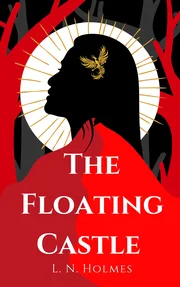Prince Elias of Gledann, the resentful heir of a domineering and abusive king, is forced into a politically motivated marriage with Princess Fu Liling of Toguan. Liling is both a dutiful daughter and a reluctant pawn; her bond with her own powerful father grants her unusual privileges as she steels herself to manipulate foreign courts. Meanwhile, at the Gledann Military Academy, the peasant-born squire Emmeline York struggles with illiteracy and prejudice, hoping for independence from her violent family. Valena Hemlock, a witch-in-training from the secluded hamlet of Gildacrest, longs for her magical powers to emerge, as she’s isolated and insecure in a community defined by supernatural excellence (“It’s never going to happen for me. I’m never going to be a competent witch”). The novel frequently shifts perspectives, painting a vast fresco of dynastic intrigue, coming-of-age anxieties, and imperial rivalries. Ambition, inheritance, and the burdens of parental expectations weigh heavily on each main figure. Holmes imagines a world in which gendered hierarchies, religious rites, and political marriages drive conflict. The titular floating castle is simultaneously a locus of intrigue, a prison for Liling, an engineering marvel, and the site of symbolic and literal disaster. The novel boasts strong worldbuilding in the rich ceremonial details of Toguan’s court and the earthy rituals of the Gildacrest witches, but the narrative is weighed down by extensive exposition and occasionally clunky prose. The characters can feel like mouthpieces for the author’s themes rather than fully fleshed individuals. The dialogue leans into blunt declarations rather than suggestion or subtext, and the pacing sags through the cycles of rituals, hunts, and lectures. Readers who relish intricately cataloged court customs will find satisfaction, but others will be left impatient for the story to locate its true center.
Categories
THE FLOATING CASTLE
